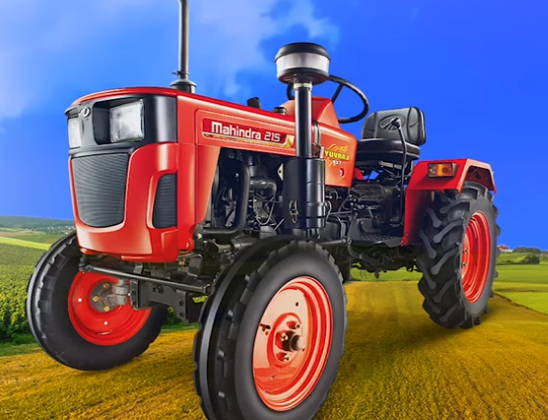
Tractors form the backbone of mechanised farming in India. For thousands of farmers across the country, owning a Mahindra tractor is not just about convenience. It’s about dependable performance in every season. Whether you are tilling a new field, transporting harvest, or working in muddy terrain, your tractor needs to function smoothly. To ensure that, regular maintenance is not optional. It’s essential.
Over time, even the most rugged tractors develop wear. What makes the difference is how early you act and how consistently you care for the machine. This guide offers a professional approach to tractor maintenance, designed specifically for Mahindra users.
Start with Regular Cleaning: Keep the Machine Fit from the Outside
Dust, grease, dried mud, and crop residue are part of everyday fieldwork. But if left to build up, they can do more damage than you expect.
- Make it a habit to clean your tractor after every major task, especially if you’ve worked in wet soil or dry, dusty conditions.
- Use water with moderate pressure to remove stuck-on dirt from the wheels and chassis.
- Be cautious when cleaning near electrical units and wiring. Avoid soaking sensitive areas like the dashboard or battery points.
- Wipe down metal surfaces after washing. This simple step prevents long-term rust and keeps the paint finish intact.
Regular cleaning also gives you the chance to spot oil leaks, cracked hoses, or loosened bolts before they turn into larger issues.
Daily Checks on Engine Oil, Coolant, and Brake Fluids
No matter how powerful your tractor is, if internal fluids are running low or dirty, efficiency and safety both decline.
- Engine oil should be inspected before the day’s work begins. Use the dipstick to check the level and note the colour. If it appears dark or sticky, it may be due for replacement.
- Coolant levels must remain between the marked limits. This is especially important when working long hours in higher temperatures.
- Hydraulic fluid supports lifting and steering. When levels drop, the performance of implements also drops.
- Brake and clutch fluids are often overlooked. But poor braking or jerky clutch engagement may be signs of low fluid or air in the lines.
Make a habit of topping up using only Mahindra-approved fluids. Mixing grades or using cheap substitutes can cause long-term internal wear.
Replace Filters at Recommended Intervals
The filters are significant to the health of your tractor even when you do not physically see them working. Their task is to prevent the entry of dust, debris and other contaminants in the sensitive components.
- Checking of air filter should be once a week. In conditions of low moisture, dusty, cleaning may be required more frequently
- The fuel filter should be replaced based on usage hours or whenever you notice reduced power or difficult starts. Fuel quality in rural areas can vary, and filters help mitigate this.
- An oil filter must always be changed along with the engine oil. Reusing it may compromise the quality of the new oil.
Do not try to clean disposable filters or push them past their limits. When in doubt, replace.
Tyres: A Direct Link Between Engine Power and Ground Traction
Your tractor’s tyres are in constant contact with varied surfaces. Their condition directly affects stability, fuel consumption, and pulling capacity.
- Measure tyre pressure with a gauge. Do this weekly or before any long session.
- Underinflated tyres put stress on the engine and reduce efficiency. Overinflated ones can compromise grip.
- Scan for signs of damage. Cuts on the sidewall, exposed metal, or uneven wear indicate it’s time for a replacement or rotation.
Good tyres do more than carry the tractor. They maximise fuel efficiency and protect the soil by improving contact and balance.
Lubrication: Do Not Ignore the Joints and Moving Components
From steering to linkage arms, every moving joint relies on smooth motion. That only happens when joints are properly greased.
- Refer to your owner’s manual for grease points. Mahindra tractors come with diagrams to guide this process.
- Clean the grease nozzle before each application. Inject only the required amount. Over-greasing attracts dirt and causes long-term damage.
- Joints like the clutch pedal, steering column base, and rear lift arms should be greased at least once every two weeks.
Lubrication prevents creaking, stiffness, and premature wear on parts that are often expensive to replace.
Battery Health: Small Steps to Prevent Big Failures
Battery failure often catches owners off guard. Most times, it happens not because the battery is old, but because it hasn’t been appropriately maintained.
- Inspect the terminals for corrosion. A white or green powder around the terminals should be cleaned immediately with a dry brush.
- Tighten the connectors. Loose wiring leads to intermittent starting problems.
- If your tractor is idle for more than a week, disconnect the battery or attach it to a trickle charger.
- In cold weather, batteries discharge faster. In such cases, monitor charge levels more frequently.
A functioning battery supports the entire electrical system. That includes lights, sensors, and even the fuel injection controller in modern models.
Belts, Hoses, and Wiring: Look Beyond What’s Visible
Belts and hoses may not be noticed during daily use, but they are essential for proper function.
- Look for signs of belt slack, noise, or visible wear. A slipping belt affects both the alternator and cooling system.
- Examine coolant and fuel hoses for leaks. Soft spots, cracks, or bulges are red flags.
- Inspect wiring harnesses. Tractors often attract rodents, especially when parked in open barns. Chewed wires can shut down ignition or lighting without warning.
Keep spare fuses and insulation tape in your toolbox. Quick fixes at the right time prevent long halts.
Follow the Manufacturer’s Service Timetable Without Delay
Every Mahindra tractor comes with a service chart based on operating hours and following that schedule is the best way to ensure you have long-term reliable performance.
- After every 50, 100, and 250 hours of operation, service requirements vary. These include oil changes, filter replacements, and inspection of key mechanical parts.
- Record each service visit. Note what was changed, what was inspected, and the technician’s observations.
- Always use original Mahindra parts. Aftermarket components may not offer the same durability or fit.
A well-serviced tractor runs cleaner, pulls better, and consumes less fuel. Keeping your Mahindra tractor in good condition through regular maintenance can significantly reduce long-term ownership costs, making the overall tractor price more justifiable over time.
Final Thought
A Mahindra tractor is designed to serve you for years. However, long life is not automatic. This is based on its maintenance method. When consistently cleaned, properly lubricated, and maintained on a schedule, tractors almost always produce better and consume less fuel and less frequently break down.
Regardless of whether you own one acre or fifty of land, these tips will go a long way toward ensuring your machines serve your day-to-day concerns without breaking down on you in the process. It is practical, preventive, and ultimately, profitable.
